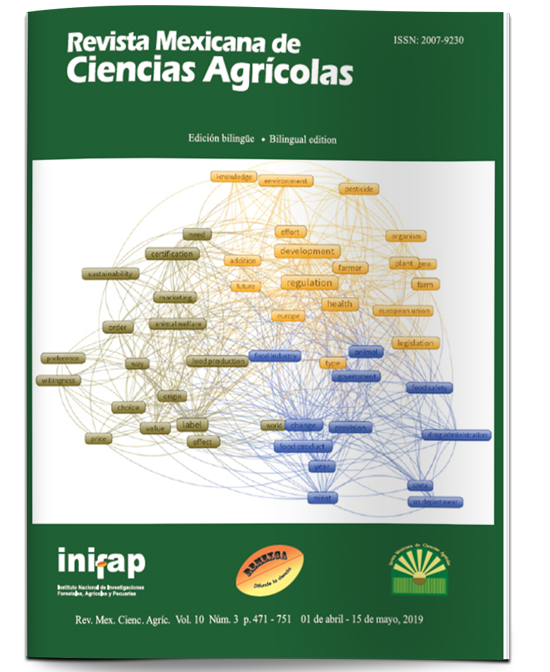Yield and profitability of papaya genotypes based on chemical, organic and biological fertilization
DOI:
https://doi.org/10.29312/remexca.v10i3.1498Keywords:
Carica papaya L., biofertilizer, nutrition, productionAbstract
Papaya is one of the fruit trees with the greatest demand in world markets, so it is important to develop new agricultural technology (fertilization) that helps to produce papayas of excellent quality, in addition to reducing production costs. The objective of this study was to determine the effect of chemical, organic and biological inoculant fertilization on the yield and profitability of two papaya genotypes. The investigation was carried out in the Superior Agricultural College of the state of Guerrero. The study consisted of evaluating the two genotypes of papaya, Maradol and Mulata in combination with chemical fertilizers, organic and biological inoculants. The evaluated variables were days to flowering, height of plant, stem diameter, days to harvest, number of fruits per plant, diameter and length of the fruit, total soluble solids (°Brix), average weight of the fruit, yield and economic profitability. The genotypes of papaya Maradol and Mulata presented a better response in their growth with the application of chemical fertilizer, for having fewer days to harvest, as well as a larger stem diameter in comparison to biological and organic fertilization. The chemical fertilization in papaya plants Maradol generated the highest number of fruits (38) and content of soluble solids (11.49 °Brix) and in the genotype Mulata promoted a better fruit weight (1 906 g) and yield (99.19 t ha-1). The biological inoculants favor the increase in the size of the fruit. Mulata with chemical fertilization was more profitable (GPI of $5.36) than Maradol with (GPI of $4.98).
Downloads
Downloads
Published
How to Cite
Issue
Section
License
The authors who publish in Revista Mexicana de Ciencias Agrícolas accept the following conditions:
In accordance with copyright laws, Revista Mexicana de Ciencias Agrícolas recognizes and respects the authors’ moral right and ownership of property rights which will be transferred to the journal for dissemination in open access. Invariably, all the authors have to sign a letter of transfer of property rights and of originality of the article to Instituto Nacional de Investigaciones Forestales, Agrícolas y Pecuarias (INIFAP) [National Institute of Forestry, Agricultural and Livestock Research]. The author(s) must pay a fee for the reception of articles before proceeding to editorial review.
All the texts published by Revista Mexicana de Ciencias Agrícolas —with no exception— are distributed under a Creative Commons License Attribution-NonCommercial 4.0 International (CC BY-NC 4.0), which allows third parties to use the publication as long as the work’s authorship and its first publication in this journal are mentioned.
The author(s) can enter into independent and additional contractual agreements for the nonexclusive distribution of the version of the article published in Revista Mexicana de Ciencias Agrícolas (for example include it into an institutional repository or publish it in a book) as long as it is clearly and explicitly indicated that the work was published for the first time in Revista Mexicana de Ciencias Agrícolas.
For all the above, the authors shall send the Letter-transfer of Property Rights for the first publication duly filled in and signed by the author(s). This form must be sent as a PDF file to: revista_atm@yahoo.com.mx; cienciasagricola@inifap.gob.mx; remexca2017@gmail.
This work is licensed under a Creative Commons Attribution-Noncommercial 4.0 International license.



